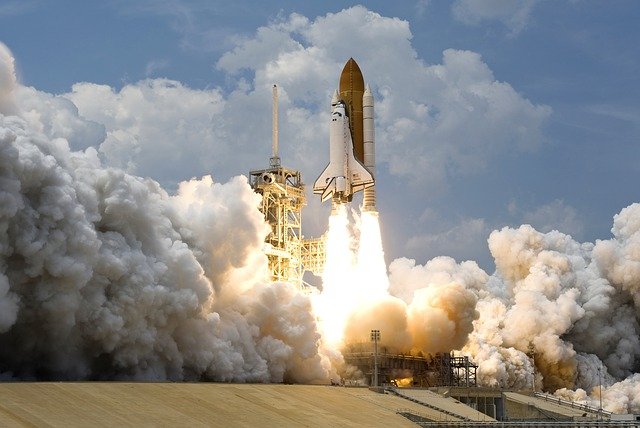Focus on the continued survival of the moon and manned missions to Mars, both strategic and commercial, NASA continues to develop space “tipping point” technology, World wave of technological innovation
The National Aeronautics and Space Administration (NASA) has long established public-private partnerships with many U.S. space companies to develop “Tipping Point” technology, that is, potentially revolutionary space technology.
According to recent news from NASA’s official website, NASA continues to cooperate with industry to develop a series of technologies-including the signing of “tipping point” technology contracts worth hundreds of millions of dollars with 14 companies, in order to achieve this in 10 years. Continue to survive on the moon and pave the way for manned missions to Mars.
According to the project description, if in the demonstration, a technology can significantly promote the maturity of the technology through investment, increase the possibility of commercial space applications, and the technology can be marketed by the government and commercial applications, then the technology is deemed to be in “Tipping Point”.
After focusing on the “Artemis” project
At the beginning of October this year, NASA officially released the planning report of its “Artemis” lunar exploration program.
In December 2017, U.S. President Trump signed a policy order and called on NASA, business and international partners to work together with leaders to explore the moon and more far-reaching goals.
Since then, NASA has been fine-tuning the report.
In this report, NASA described its approach to exploration and the progress of the plan so far, and answered three questions: How to achieve sustainable lunar exploration? Is the basic ability of the United States to return to the moon sufficient? How can lunar missions pave the way for future Mars exploration?
In addition, this report also discussed the scientific strategy and lunar surface technology of the “Artemis” plan, including the construction of mission core components, flight readiness and funding requirements.
It can be seen that NASA is striving to open up an “Artemis Road” to achieve sustainable development on the moon as soon as possible.
In fact, NASA and its partners have developed and tested many technologies, which are essential for achieving sustained survival on the moon and manned missions to Mars.
Just a few days ago, the U.S. industry has submitted a proposal to NASA’s fifth “tipping point” bid, with an expected total amount exceeding US$370 million. NASA’s Space Technology Mission Council will negotiate with these companies to sign a milestone company fixed-price contract with a contract period of up to 5 years.
Encourage companies to lead technological innovation
This cooperation is focused on three areas: cryogenic fluid management, technology demonstration of the lunar surface innovation program, closed-loop descent and landing capability demonstration. Among them, several companies with relatively large amounts include:
Merritt Island Eta Space, US$27 million. The system developed by it will become the main payload on the Rocket Lab’s photonic satellite and collect key cryogenic fluid management data in orbit for a period of 9 months;
Lockheed Martin, US$89.7 million, will use liquid hydrogen (the most challenging of cryogenic propellants) for space demonstration missions, test more than a dozen cryogenic fluid management technologies, and allow it to be added to future space systems;
U.S. Space Exploration Technology Corporation (SpaceX), US$53.2 million, to conduct large-scale flight demonstrations and transfer 10 metric tons of cryogenic propellant between the storage tanks of the interstellar spacecraft;
The United Launch Alliance (ULA), US$86.2 million, will use liquid oxygen and hydrogen to demonstrate an intelligent cryogenic propulsion system that will test accurate tank pressure control, transmission, and propellant storage;
Houston Space Testing and Research Alliance, US$22.1 million. Its space science and technology evaluation facility will provide access to the lunar environment for small experiments, collect data and test the exposure intensity of ultraviolet and charged particle radiation;
Houston Intuition Machine Company, $41.6 million, will develop a small, deployable lander that can provide a 2.2-pound payload, can enter lunar craters and perform high-resolution measurements on the lunar surface;
Nokia, US$14.1 million, inspired by ground technology, will deploy the first LTE/4G communication system in space. This system can support longer-distance lunar communication, greatly improving speed and reliability.
These are just some of the 14 companies.
NASA Administrator Jim Bridenstine said that NASA’s major investment in innovative technology demonstrations is led by large and small companies from nine states in the United States. This initiative will provide more possibilities for space and lunar surface exploration.
Not only accomplish strategic tasks, but also ensure commercial benefits
“These are the best’tipping point’ proposals currently selected by NASA, and they are also the largest amount of projects so far.” NASA Deputy Director of Aerospace Technology Jim Reuter said that he is very pleased with NASA’s investment and joint efforts with partners. It can bring the latest technology to human lunar exploration and other fields, and does not ignore the interests of the commercial sector.
Each company here must bear a minimum percentage of the total project expenditure based on its own scale, in order to combine NASA resources with industrial investment-not only to ensure the development of key space technologies, but also to save NASA and American taxpayers Money.
There is no doubt that the current goal of the United States is to land on the moon as soon as possible before embarking on the next huge leap-a manned mission to Mars. NASA’s moon landing must also pave the way for a new and sustainable “lunar economic system”. At the same time, it must also benefit both US business partners and international partners.



